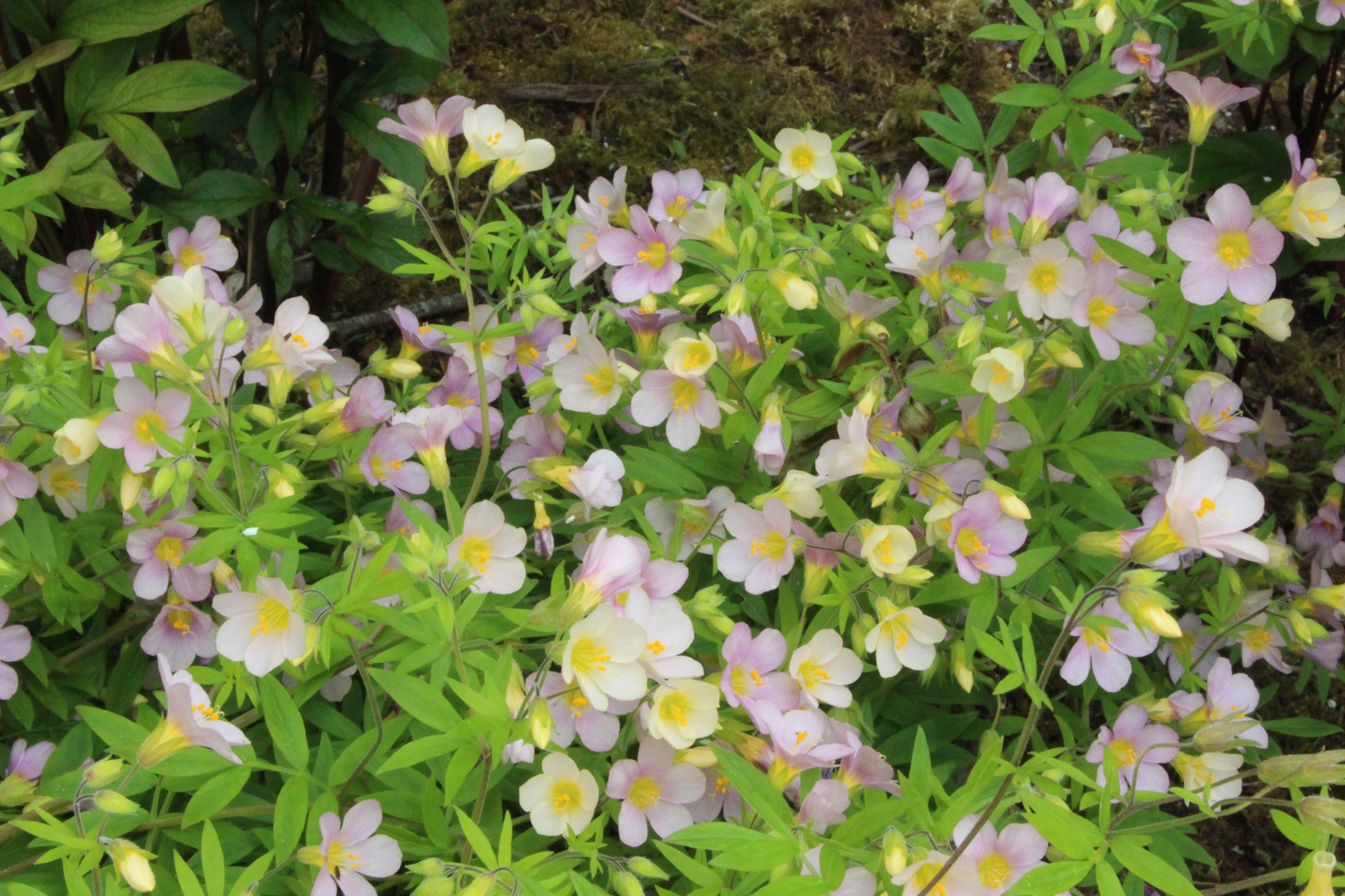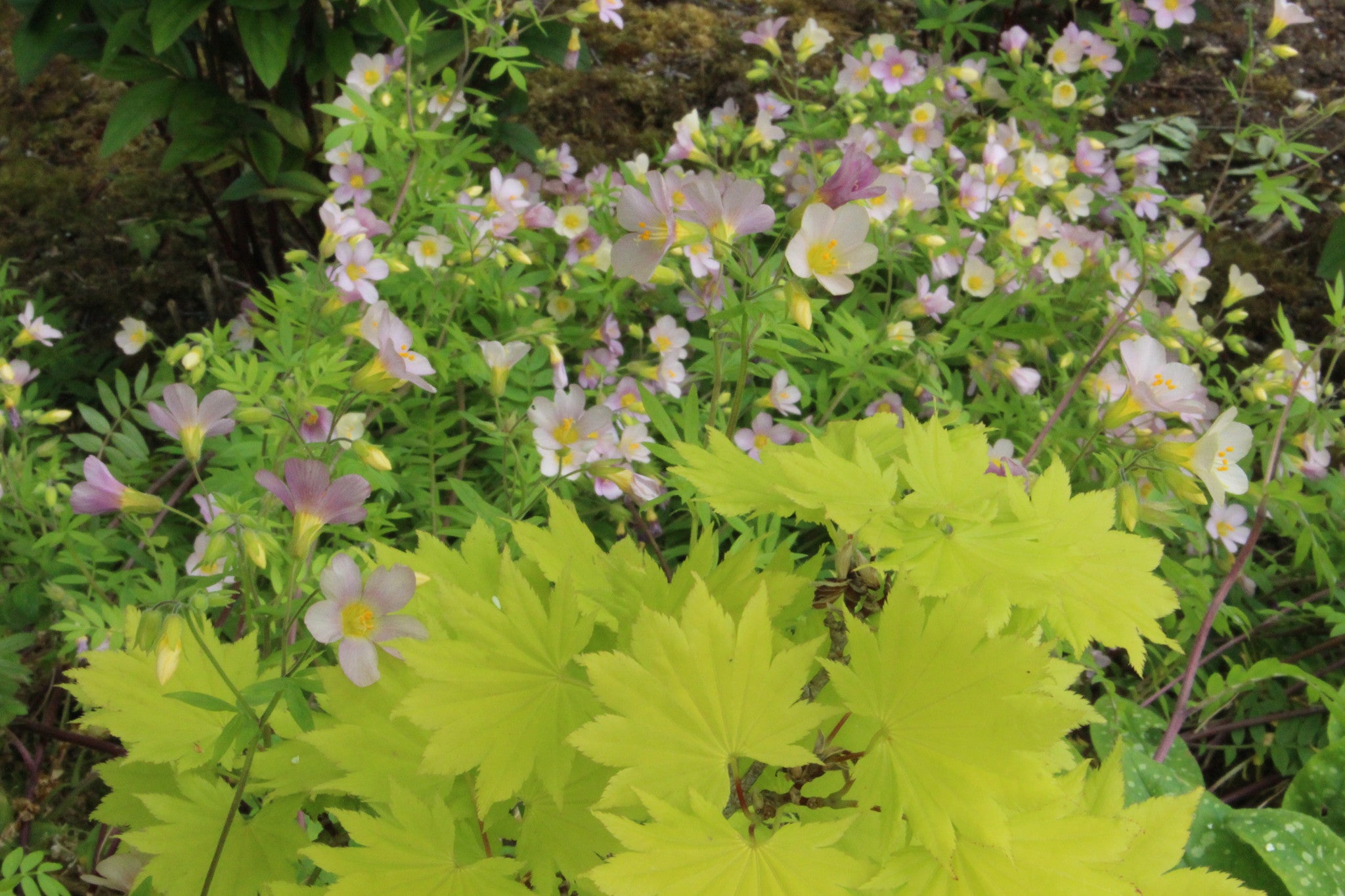Polemonium carneum 'Apricot Delight'
Approx. 0.5 litre pot
About this cultivar:
Polemonium carneum 'Apricot Delight' provides soft bunches of pinky-apricot blossoms atop tall stems above attractive green, compound foliage from late spring thru early summer. This is a unique colour for polemoniums and it is very easy to grow. Self-seeds quite a bit though.
- Position: Full sun, Partial shade
- Soil: Almost any soil, grows well in Ballyrobert
- Flowers: May, June, July
- Other features: Scented, Bees and Butterflies
- Hardiness: Fully hardy, grows well in Ballyrobert
- Habit: Clump forming, bushy
- Foliage: Deciduous
- Height: 30 - 45 cm (1 - 1.5 ft)
- Spread: 30 - 45 cm (1 - 1.5 ft)
- Time to full growth: 2 to 5 years
- Plant type: Herbaceous Perennial
- Colour: Green, purple, pink
- Goes well with: --
About this genus:
Polemonium (pol-e-mo-ne-um), commonly called Jacob's ladder, is a genus of between 25 and 40 species of flowering plants in the family of it's own name (Polemoniaceae), most of which are native to cool temperate to arctic regions of the Northern Hemisphere.
They are perennial plants (rarely annual plants) growing 10–120 cm tall with bright green leaves divided into lance-shaped leaflets, and produce blue (sometimes white or pink) flowers in the spring and summer. A few of them have a pleasant smell!
The name Polemonium comes to us from the Greek polemos or war'. As one story goes, two princes both claimed to have discovered the plant and from that dispute, the genus name Polemonium was derived. Or it could be from the lance shaped leaves... or it could be that Dioscorides named it after King Polemon of Pontus. Take your pick.
Polemonium plants prefer partial shade and wet-but-not-waterlogged conditions. We've found full sun to be fine (on these islands). If you cut back Polemonium plants in late spring, you may also get a second flush of flowers. Try pairing Polemonium with Astilbe, Heuchera, Carex, or other small spring bloomers.




